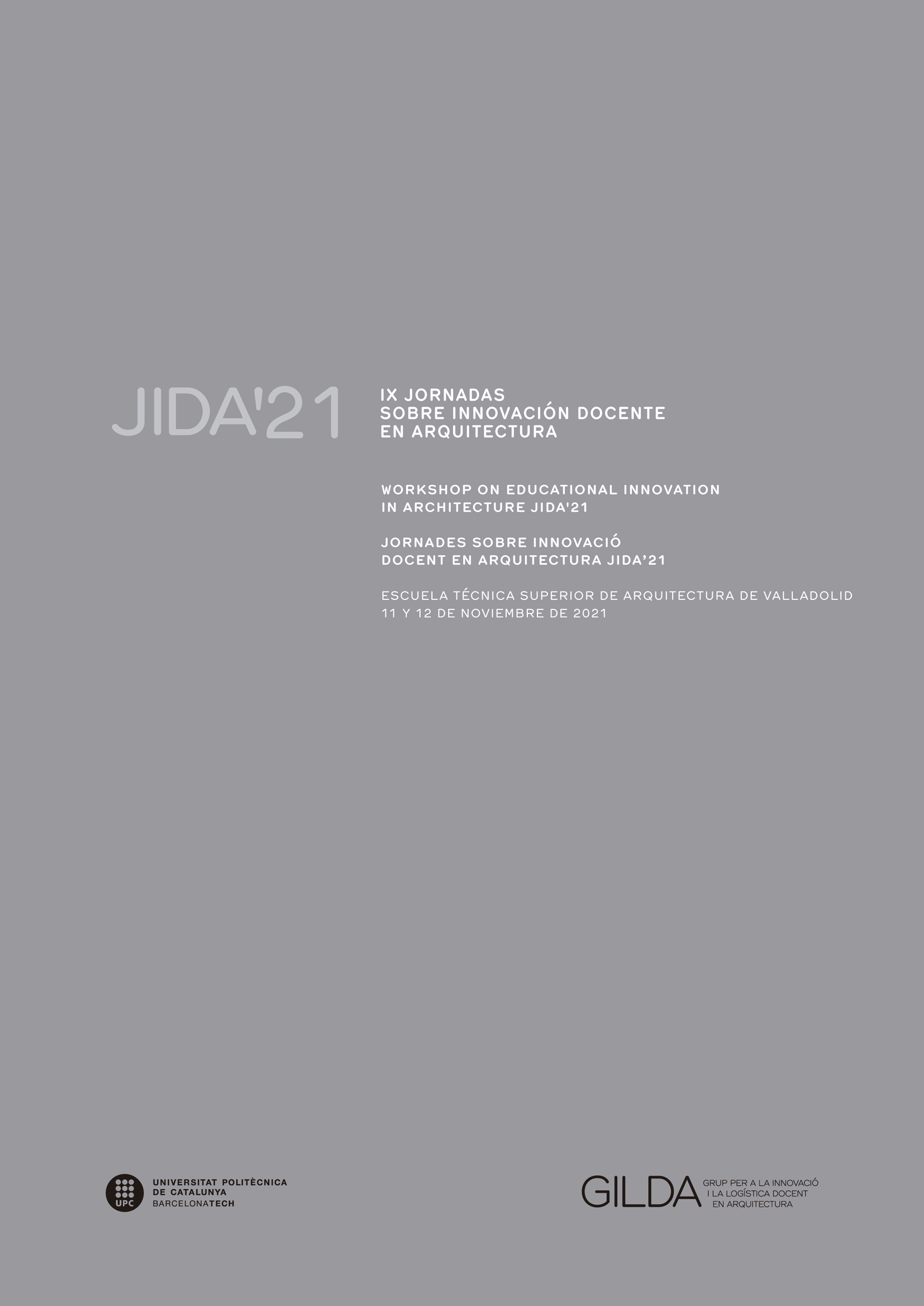Integration of sustainable standards in architectural projects
DOI:
https://doi.org/10.5821/jida.2021.10483Keywords:
integration of sustainable standards,, architecture, critical vision, feedback, market needsAbstract
This article presents the experience of the work that has been developed within the subject Energy Optimization of Heritage of the degree in Foundations of Architecture of the UPV/EHU. For the first time, during the 2020/21 academic year, different standards associated with sustainability have been integrated into architectural projects previously developed by students of the Master of Architecture of the UPV/EHU. The objective of this integration is mainly focused on stimulating a debate and assimilating the direct architectural and urbanistic influence that the implementation of different standards that are being demanded in the national and international market implies. At the end of the course it is concluded that the integration of sustainable standards should not be limited to an optional subject, but based on a clear, objective and transversal goal it should be structural in the different areas and subjects of the architecture degree.
References
CASTILLO HAEGERM, C.A. y DEL CASTILLO OYARZÚN, M. (2005). “La enseñanza de la sostenibilidad en las Escuelas de Arquitectura españolas” en el Boletín CF+S 42/43. Simposio Internacional Desarrollo, Ciudad y Sostenibilidad. <http://habitat.aq.upm.es/boletin/n42/ac-ccas.html> [23/07/2021]
CHACÓN, R.M. y GRACIELA PAMPINELLA, B. (2012). “Educación para la sostenibilidad: la formación académica de arquitectos y urbanistas” en Educere 2012, vol 16, issue (53), p. 71-82.
HERNANDEZ, P. ; OREGI, X. ; LONGO, S. ; y CELLURA, M. (2019). “Life-Cycle Assessment of Buildings“ en Handbook of Energy Efficiency in Buildings. A Life Cycle Approach Elsevier, p. 207-261.
MARSZAL, A.J.; HEISELBERG, P.; BOURRELLE, J.S.; MUSALL, E.; VOSS, K.; SARTORI, I.; y NAPOLITANO, A. (2011). “Zero Energy Building – A review of definitions and calculation methodologies” en Energy and Buildings, vol. 43, issue 4, p. 971-979.
MESTRE MARTINEZ, N. y ROIG, E. (2015). “Sostenibilidad y otras demandas contra-intuitivas de la pedagogía de la creatividad” en III Jornadas sobre Innovación Docente en Arquitectura. Barcelona. Disponible en <https://upcommons.upc.edu/handle/2117/81693> [23/07/2021]
OREGI, X., HERNANDEZ, P., HERNANDEZ, R. (2017). “Analysis of life-cycle boundaries for environmental and economic assessment of building energy refurbishment projects” en Energy and Buildings, vol. 136, p. 12-25.
PEREZ, M. (2014). “Ecoinvolucrate: Alternativa para la sostenibilidad en la Arquitectura” en ESTOA 2014, vol 3, issue (5), p. 29-35.
PEREZ, M. (2016). “La Educación Universitaria Para La Sostenibilidad Arquitectónica. Caso Ecuador” en European Scienctigic Journal 2016, vol 12, issue (10), p. 287-296.
REYES LÓPEZ, E.A. (2013). La Educación del Arquitecto para el Desarrollo Sostenible Enfoque desde la docencia. Tesina de la Universidad Politécnica de Cataluña, ETS de arqutiectura de Barcelona <https://wwwaie.webs.upc.edu/maema/wp-content/uploads/2016/07/TESINA-Reyes-Anahi.pdf> [23/07/2021]
RODRIGUEZ, I.; OTAEGI, J.; y OREGI, X. (2020). “Thermal Comfort in NZEB Collective Housing in Northern Spain”. Sustainability, vol.12, issue 22, p. 9630.
UNIVERSIDAD DEL PAÍS VASCO. Economía circular: aplicación a la empresa <https://www.ehu.eus/es/web/graduondokoak/master-economia-circular-aplicacion-empresa> [23/07/2021]
UNIVERSIDAD DEL PAÍS VASCO. Sostenibilidad y compromiso social <https://www.ehu.eus/es/web/iraunkortasuna> [23/07/2021]






















